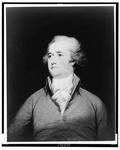I think I’ve been gone long enough.
My surgery (way back on the 2nd) seems to have been successful and, though I’m still a bit stiff and sore, I’m getting better every day. The surgeon removed a thumb-sized chunk of disk (ok seriously…is it “disk” or “disc”?) that was sitting on the nerves. As soon as I woke up in the recovery room, I could tell the pain in my left leg was gone.
That’s a great feeling, even though I hurt from being cut open. And I was home by 2pm the next afternoon…though not very functional.
My wife was extremely helpful and patient throughout the recovery. It’s somewhat humbling to say that I don’t think I was nearly as good with her when she had surgery. In my defense, I had no idea what surgery does to a body, and I blame TV for giving me a really distorted view of the whole surgical process, though that excuse is pretty flimsy in its own right. I will do better with her next time.
Oh, and morphine is lousy…I learned that, too.
I’ve talked about authors once or twice in this forum. Right off hand, I can remember Robert Ludlum and Tom Clancy. Let’s do it again.
I met Michael Crichton’s work in the exact same fashion as I did books by Robert Ludlum. A lady with whom I worked at my first job out of college knew I liked to read, and loaned me a book. I recall that it had a white cover and a dinosaur skeleton on the front. The title, Jurassic Park, meant nothing to me, but I figured I’d give it a go.
When I returned the book to her the next morning, her initial thought was probably that I had read a few pages (maybe even a chapter or two), and then given up on it. Or maybe she noticed my general state of lethargy, the bags under my eyes, and my dragging feet. I don’t know, but that tells the true story. I had found another “glue” book (once it gets in your hands, it’s stuck there until it’s finished).
Of course, the premise of Jurassic Park is completely implausible. Most of you have probably seen the movie (which does a respectable job of honoring the book), so you know the plot. A rich guy builds a prehistoric park with real dinosaurs created from DNA taken from ancient mosquitoes. Then the whole thing collapses in spectacular fashion.
What captured me was the realism with which Crichton wove his tale. Premise?…like I said, completely implausible. Delivery?…totally believable. The book was written with an authenticity that sucked me in. There was almost a nonchalance with this intricate scientific…stuff…that lent credibility to the story. I simply couldn’t put it down and had spent the entire night reading.
And while Jurassic Park may be Crichton’s best-known work, it certainly wasn’t the only one. I was suddenly interested in what else this guy had written. I purchased a copy of Jurassic Park for my own, then followed it with copies of The Andromeda Strain, Congo, Sphere, The Lost World, Timeline, Airframe, and Prey.
And while I thought some of them were less good than others (I really had to work to get through Congo), each was really interesting. Prey was a sort of nano-technology/artificial intelligence story that I found fascinating. The Andromeda Strain (one of Crichton’s earlier books) was completely engrossing until the final ten pages. At that point (in my opinion), it simply fell apart.
But Michael Crichton, who was born October 23, 1942, did more than write books. If I recall, he was actually a Harvard-educated medical doctor, though I don’t know that he ever practiced medicine (the books and the movie rights probably made him a healthy living)…maybe he did. This fact alone makes his success even more remarkable because, as you know (if you’ve visited the doctor’s office), most doctors can’t even write their names in a legible format. Anyways, he came up with the screenplay for the movie Twister (which is familiar to many of you), and of course, was the executive producer of the very popular TV series ER.
Crichton passed away in 2008, a victim of cancer. But like Ludlum, his writings survive, and continue to entertain readers the world over. If you’ve never read anything by Michael Crichton, you should.
Happy Birthday, Michael Crichton!!
Recommended Reading: Jurassic Park – If you haven’t seen the movie, this is a great place to start. Otherwise, I really liked Airframe and Prey.

















